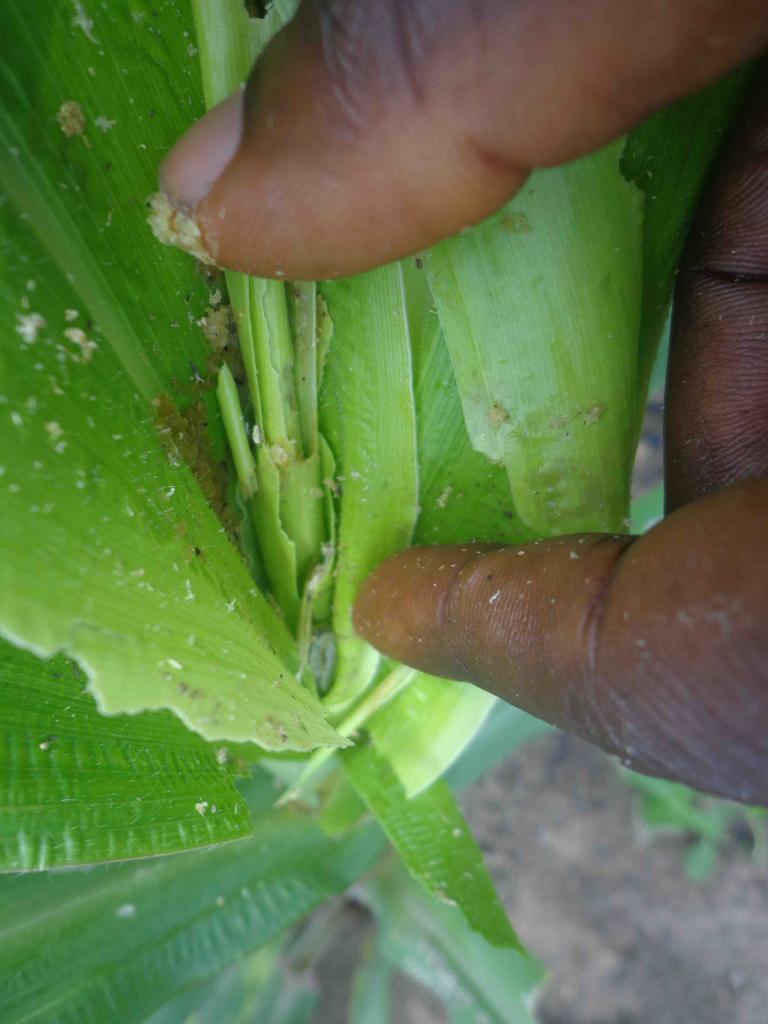Fall Armyworm
Fall armyworm affects over 80 different plant species. The following are important hosts: maize, rice, cotton, peanuts, soy, alfalfa, sorghum, sugarcane, bermuda grass, tomatoes, peppers, potatoes, eggplant, and tobacco.
Fall armyworm (FAW) is a species of moth and a member of the Lepidoptera. It feeds on the leaves and stems of more than 80 plant species and causes major damage to economically important crops.
FAW is regarded as a highly invasive species due to its ability to spread and reproduce quickly; female’s can lay over 1000 eggs during her lifespan. The lifecycle of FAW includes: egg, sex larval stages, pupa, and adult moth. The larvae stage is responsible for damaging the crop, and the adult moths move in the direction of the wind, which can reach up to 100 km a day. The adult moth is nocturnal (active at night).
There isn’t a simple way to control fall armyworm; farmers need to equip themselves with different strategies.
Monitoring: Closely inspect your fields (at least once a week) and look for the presence of caterpillars and feeding signs upon foliage. Early pest detection is crucial since insecticide treatment on young larval stages had higher rates of success
Sanitation: Make an effort to clean and maintain your field’s close surroundings from weeds as often as possible
Crop rotation of non-host plants will aid in reducing pest populations
The timing of insecticide applications is critical. There is a necessity to spray when caterpillars are still small. Insecticides will have a difficult time controlling caterpillars bigger than half an inch in length.
The efficiency of applications depends on the stage of development and growth: As time progresses, height and density of the crop canopy can be a limiting factor and obstruct spraying materials from reaching their destination.
How To Know When To Spray?
Some general guidelines: Inspect your field and roughly estimate the infestation level. Consider taking an action when:
Approximately 5% of seedling plants are infested (initial phase of growth)
Approximately 20% of the whorls of small plants show the presence of the pest (first 1.5 months after seeding)
The following are generic names of products divided into separate groups (with respect to their mode of action). These products are found in one or more parts of world:
Group 1: Cypermethrin, lambda cyhalothrin, bifenthrin, betacyflutherine, and Deltamethrin; Group 2: Chlorantraniliprole and Flubendiamide; Group 3: Lufenuron, teflubenzuron, and methoxyfenozide; Group 4: Pyridalyl; Group 5: Indoxacarb; Group 6: Acetamiprid; Group 7: Emamectin benzoate; Group 8: Methomyl; Group 9: Chlorpyrifos
*Names marked in red are considered to be highly poisonous to beneficial insects.
*Names marked in green are considered to be organic and IPM (integrated pest management) compatible.
Careful thought should be taken when planning to use the above chemicals marked in red. What makes the FAW caterpillar so dangerous and difficult to control is that it can build resistance to pesticides quickly. Therefore, rotation between products based on different mode of action is crucial.
If caterpillar populations remain unchanged after a single application of one of the chemicals marked in red, future applications won’t just be inefficient. They will likely wipe out the presence of beneficial insects within the field’s close surroundings and make the situation worse.
Spinosad-based products
Bacillus thuringiensis aizawai-based products There are no known commercially-available natural enemies at this moment.
*Names marked in red are considered to be highly poisonous to beneficial insects.
*Names marked in green are considered to be organic and IPM (integrated pest management) compatible.
Image Gallery


